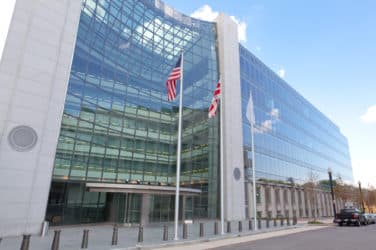Regulators Care about Crypto Market Manipulation. Here’s What Really Matters.
07.18.2023
By Mike Castiglione, Director of Regulatory Affairs, Digital Assets at Eventus
Those who work in highly regulated industries know that there’s usually a story behind why a rule exists. Someone, years ago, made a mistake or attempted a fraud, so now there are checks in place.
Infamously during the 1929 crash, Albert H. Wiggin, the head of Chase Manhattan Bank, shorted his own company’s stock without any disclosure, netting him $4 million at the time. When Congress found out, they inserted the so-called “Wiggins Provision” in the Securities Exchange Act of 1934 (Section 16) to prohibit such a trade and require reporting from company directors. Other such incidents from the era—such as Arthur W. Cutten’s manipulation of grain prices—led the SEC and the 1936 Commodity Exchange Act to ban “manipulative and deceptive devices,” such as insider trading, wash sales, spoofing, layering and any other type of false orders that disrupt the free forces of supply and demand.
Policymakers working on crypto regulation are pulling these checks against market manipulation into crypto markets, building on an initial focus on anti-money laundering (AML) efforts. As a recent report from Eventus shows, regulators are scrutinizing new financial products and crypto trading is top of their lists. For example, the SEC promised examinations of broker-dealers building out crypto services and the CFTC said it would continue its “multi-year” initiative to improve its own trade surveillance against manipulation in novel markets, such as digital assets.
Looking at crypto regulation outside the U.S., the UK’s Financial Conduct Authority (FCA) noted it will consider the “deterrence value” in pursuing enforcement, suggesting that high-profile products like crypto will remain a target. The EU’s new comprehensive Markets in Crypto-Assets (MiCA) law will become fully in force by December 2024. In June, Hong Kong’s Securities and Futures Commission (SFC) issued guidelines for virtual asset trading platforms that devoted an entire section to preventing crypto market manipulation and market abuse. SFC said operators “should adopt an effective market surveillance system provided by a reputable and independent provider.”
Meanwhile, compliance officers at financial institutions must apply hard-won lessons as they guide their firms to build out digital asset businesses in a safe, compliant manner. Financial institutions have expressed a need for trade surveillance technology that is designed by experienced practitioners and, crucially, nimbly tailored based on client input.
When taken seriously, backed by the right corporate culture and implemented, today’s trade surveillance technology can effectively combat crypto market manipulation and manage regulatory risk. These are the elements that will really matter to compliance professionals and will allow for new products, like a Bitcoin ETF, and rapid response to developing crypto regulations. When all these pieces come together, regulators have directed their attention elsewhere, as recent enforcement cases show. This is the core lesson for compliance teams tasked with shaping a digital asset regulatory strategy in broker-dealers, futures commission merchants (FCMs), banks, prop trading firms and other established financial institutions.
Technical Ability, At Scale
Implementation of effective market abuse monitoring starts with the technical ability to ingest digital asset order, transaction and market data at scale. Given the number of tokens sometimes involved and 24/7 trading, the volume is gigantic. Any technology solution must come with the engineering experience to handle such volumes.
A professional, serious approach to combating crypto market manipulation is rooted in having the right talent able to recognize market manipulation patterns across multiple asset classes. Enterprise software needs the right humans at the helm. Slack cannot prevent poor communication. Google Docs cannot catch all typos. Even ChatGPT needs human help to catch artificial hallucinations. Likewise, trade surveillance technology needs expert, vigilant professionals to select procedures and filter alerts for each firm’s needs. The interaction between software and talent allows teams to get to the risk quicker.
The right culture includes giving trade surveillance officers the latitude and resources they need to investigate alerts and catch the problems before regulators ask about them. Those resources are much more efficient when their technology can automate much of the tedious alert remediation while maintaining audit records.
Finally, addressing crypto market manipulation will take new regulatory frameworks, as nearly every major jurisdiction has realized based on a reading of IOSCO’s crypto consultation report. In the U.S., for instance, the CFTC now has authority to prosecute wrongdoing only after the fraud has occurred. As CFTC Chair Behnam argues, the U.S. needs a regulatory framework to allow the regulators to “proactively establish rules to minimize fraud in the first place.”
Many firms trading or routing orders to digital asset markets already use trade surveillance for their commodity spot market orders, even lacking regulatory imperative to do so. Others opt not to—for various reasons—in a calculated risk. This gap creates an incentive for some firms to launch products and hope to avoid a regulator’s gaze. Improved rules can lead to more consistent application of consumer protections and will make manipulative trading more difficult.
Combatting crypto market manipulation is an essential ingredient both for regulatory compliance and for expanded uses of digital asset technologies, like crypto ETFs. We see regulators using various levers to combat the problem, as they did after the 1929 crash and subsequent financial crises. As Eventus concludes in its report, now is the time to reassess compliance risk and anticipate what your firm might be doing that will be questioned years from now as crypto regulations shift. Nimble, proven technology in handling crypto markets, along with the right culture, will be part of the solution.








